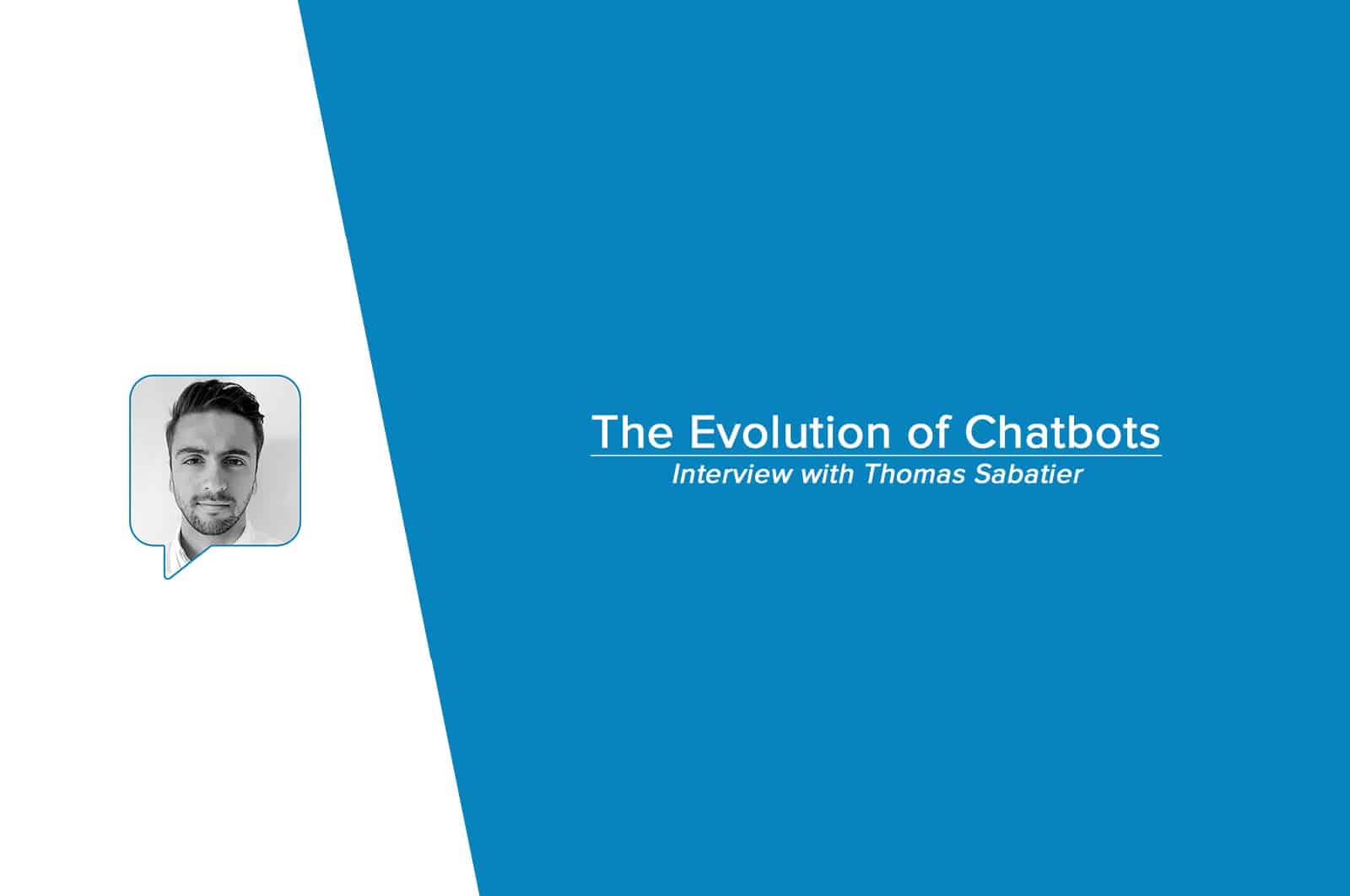Thomas Sabatier is the co-founder of The Chatbot Factory, a company that specializes in chatbots, conversational applications, and artificial intelligence. Working with more than 50 clients (Air France, BNP Paribas, Chanel, Saint Gobain…) in the design, development, and training of smartbots deployed on a proprietary solution. In this interview, Thomas digs deep on what the market holds for chatbots and the future of the technology in business.
Can you introduce yourself and tell us about your professional background?
I am the co-founder of The Chatbot Factory, a specialist in intelligent chatbots dedicated to customer support.
I feel passionate about new technologies applied to our daily lives. That’s why 3 years ago, I decided to launch The Chatbot Factory, with the ambition of making interactions between man and machine more fluid. The advent of artificial intelligence was a trigger for me.
Before that, I set up several projects and learned to undertake as a result of my failures. Coming from a family of entrepreneurs, I have always wanted to launch projects and make them grow.
In your opinion, is the market today mature as regards the real potential and limits of chatbots?
The chatbot market is relatively young and still very immature. Between a use to be democratized, technologies to be strengthened, there is still a long way to go for companies in the sector.
Since the end of 2018, we have seen a large number of actors launch themselves. I think that to succeed in this market, it is necessary to rethink the technologies and associated tools. What is striking is to read that in 71% of cases, a chatbot does not effectively solve a user problem.
There is a real gap between the possibilities offered by market solutions and the user issues to be addressed. It is on the basis of this observation that we have developed our own solutions to ensure a fast setup using more efficient technology. We provide all the monitoring tools necessary for the rapid and pragmatic development of the virtual agent, in particular by taking advantage of synergies with human agents.
What are the main cases in which the use of chatbots is relevant?
It is obvious that chatbots are very useful on simple verticals with low added value. Nevertheless, we advocate a more horizontal view of the conversational experience. The original structure of the first chatbots was very linear, framed and vertical. The freedom offered by language was muzzled by the restricted possibilities of the decision tree. This is what artificial intelligence comes to shake up. The interpretation of a user message formulated in natural language is the main issue to which NLP chatbots respond. Virtual agents based on a complex skills structure and simple Q&A allow users more freedom. It also limits the risks of UMM (Unsupported, Missed, and Misunderstood requests). This is true for customer support or transactional chatbots. In the long term, we believe in the convergence of use-cases and the advent of omniscient conversational agents, deployed over all the key moments of customer relations.
On the other hand, for which type of situations is it better to avoid chatbots?
To answer this question, it is essential to highlight the complementarity between human intelligence and artificial intelligence. The first is able to manage rich and complex interactions, requiring advanced interpretation skills and the consideration of an unlimited number of parameters. Artificial intelligence, and by extension virtual agents, are very effective when it comes to automating large volumes of simple queries.
Can you tell us about Louis and Lucie, the 2 chatbots you created for Air France? (Their functionality, differences, user feedback…)
The Louis project is above all the result of a collaboration based on trust. Air France’s teams have chosen a highly specialized partner, mastering a constantly evolving subject, where the ability to innovate is essential to the success of the project.
The common challenge for these 2 projects was mainly in our ability to push the automated language processing brick to its limits. In 2016, we were one of the first players on the market to bet on this technology and include it in all our projects. At the time, chatbots based on linear decision trees (tap bots) were rather the norm (and this is still often the case). We have tried to focus on conversational intelligence of interfaces, managing bounces, context variables, calls to external databases. Finally, the editorial charter has been particularly careful and regularly adjusted.
The objective was to deliver an engaging and intuitive user experience. Today, we are developing the chatbot’s comprehension and response skills using our tools. It is essential to be able to identify all requests “outside the scope” in order to create adequate responses or scenarios after the event. This is one of the key factors for the success of a chatbot project.
A chatbot that does not evolve, is a chatbot will die out.
In your opinion, what will be the main trends in customer relations in the next 12 months?
Our vision for the next 12 months is about the synergies to be created between the human and the machine. The main issue is the transmission and enhancement of business knowledge to the machine. Automation is the big trend, but today it is hampered by the limits of technology. Often cumbersome to implement, it does not yet offer the expected return on investment prospects. It is on this point that companies in the sector will have to pay attention and improve the economic efficiency of technological innovations.
You can find out more about Thomas and The Chatbot Factory by following him on Twitter, LinkedIn, and Medium.
Originally published Mar 28, 2019, updated May 12, 2020

